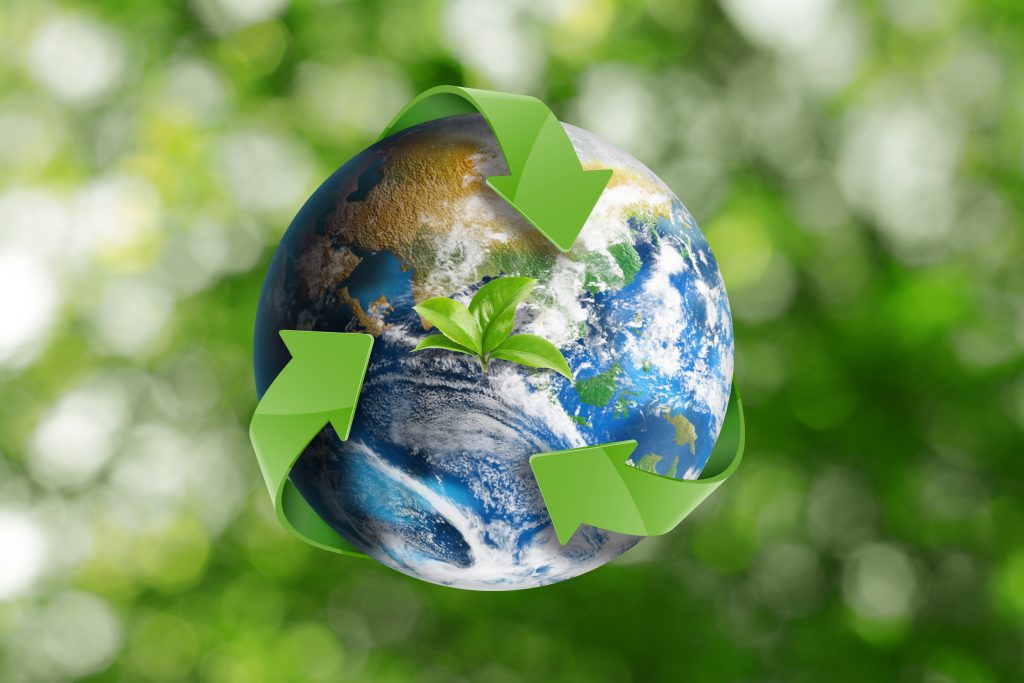It’s no secret that we, as a society, are experiencing rapid climate change and resource depletion. This Earth Day, and as global citizens, it’s our responsibility to do our part and leave our planet better than we found it.

Except it’s not just individuals who can save the planet. Large plant manufacturers and industrial facilities are some of the biggest offenders when it comes to pollution. However, there is a budding industry on the manufacturing horizon: 3D printing.
Compared to traditional manufacturing, 3D printing allows manufacturers to reduce their material waste, use energy efficiently, localize production, and reduce pollutants, but it also gives them the opportunity to recycle and use more sustainable materials. When broken down to the bare bones, 3D printing is far more economically and environmentally friendly than traditional manufacturing.
Reduced Material Waste and Energy Efficiency
In traditional manufacturing, sustainability and energy efficiency are not usually top concerns. The cutting, drilling, and shaping of raw materials produce quite a lot of waste and excess materials that often aren’t recycled or reused — not to mention the amount of energy and natural resources that are needed for large-scale productions. For context, traditional manufacturing typically uses an estimated 18.2 billion gallons of water per day (yes: per day), whereas 3D printing typically requires no water and only uses enough energy to operate the printer and heat the printing material, which is minor in comparison.
On the contrary, due to its additive nature, 3D printing only uses the amount of materials necessary to complete the job and is produced layer by layer. Often done on a smaller, on-demand scale, there isn’t much room for overproduction, excess waste, or higher energy consumption. In fact, in 2017, the U.S. Department of Energy stated that, when compared to traditional manufacturing, the future of 3D printing would lead to an approximate 90% reduction in waste and material costs while reducing energy use by 25%.
Localized Production
Since 3D printing makes way for more customizable products without the need for mass production, manufacturers can have much more precise and localized production, meaning that it can often be done in-house or locally. By having a more localized location, manufacturers can not only reduce the carbon emissions that are typically associated with shipping, leaving behind a smaller carbon footprint, but they also don’t require massive facilities, which can often benefit local economies more.

It’s also worth mentioning that, due to its on-demand and streamlined production, manufacturers don’t have to worry about bottlenecking that is common with larger productions, and it provides engineers with the flexibility to swiftly create prototypes and fine-tune their designs. In addition, 3D printing allows for a smaller production facility where space constraints to manage inventory aren’t an issue, further reducing costs.
Recycling Capability
Mistakes happen; we know this, and (most of us) have come to accept it. However, when mistakes happen during a 3D-printed production process, there’s no real reason to panic. The faulty product’s materials, whether plastic or metal, are simply processed and transformed back into usable filaments or resins for future production runs or even non-3D printed manufacturing, eliminating waste or the need for an excess of materials.
ABCorp 3D’s Green Initiatives
At ABCorp 3D, we offer environmentally and sustainable 3D printed products. The PA11 from Arkema is a sustainable nylon material made from vegetable castor oil with a 70% recycled rate, while PA12 has an average recycling rate of 80%. Recycling the unused material into the next build lowers our carbon footprint and reduces the cost of the parts. Not only does this ultimately lower production costs, but it also allows for less demand for raw materials while minimizing carbon footprint.
It’s also worth mentioning that ABCorp is a registered FDA facility, meaning we’ve gone through an extensive validation process that has proven the safety and effectiveness of our 3D printed medical devices, specifically our prostheses. Being registered and a manufacturing facility with the FDA not only proves the credibility of our products, but assures our customers, healthcare providers, and regulatory agencies that we successfully meet stringent quality and safety standards.
Conclusion
As we continue to fight the good fight when it comes to manufacturing sustainably, 3D printing embraces greener initiatives unlike any other. With a proven track record to reduce material waste and conserve energy, localize production, and allow for recycling on a large scale, industries can not only streamline their production processes but also play their role in working towards a greener, more sustainable future for generations to come.

